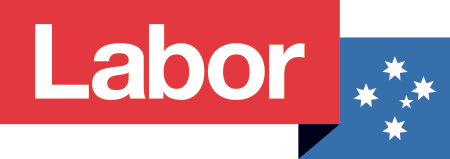The Albanese Government is doing more than ever to protect our environment. We’re delivering stronger protections for our land, waterways, plants and animals, and taking action on climate change.
Our legislation to establish our first national, independent environment protection agency passed the House of Representatives and is now before the Senate.
Environment Protection Australia will be a tough cop on the beat. It will be able to issue ‘stop-work’ orders to prevent serious environmental damage, and proactively audit business to ensure they’re doing the right thing. We’re also increasing penalties, so that punishment for seriously damaging the environment is in line with crimes like insider trading or market manipulation.
We’ve also introduced legislation to establish Environment Information Australia. EIA will provide up-to-date, transparent environmental data and information. It will release State of the Environment reports every two years, instead of five. In a world first, this bill will also provide a legal definition of, and reporting measure for ‘nature positive’.
We introduced this legislation in May this year. Non Labor Senators have had the opportunity to pass Labor’s laws for months but chose to obstruct the passage throughout.
The final weeks of Parliament in 2024 were very busy with the Government seeking to pass over 30 pieces of legislation despite the intransigence of Opposition and Cross Bench Senators. We hope to be able to pass the legislation in 2025.
Some of the Governments key achievements on the environment this term are:
- We now protect more ocean than any other country on earth, with more than half of Australian waters under protection, for the first time ever.
- We’ve quadrupled the size of Heard Island and McDonald Islands Marine Park, the biggest act of ocean conservation on the planet this year.
- We’ve tripled the size of Macquarie Island Marine Park, the biggest act of environmental conservation anywhere in the world last year.
- We’ve blocked Clive Palmer’s big Queensland coal mine that could have leached pollution onto the Great Barrier Reef.
- We’ve doubled funding to better look after national parks including Kakadu and Uluru – after the former government let them fall apart.
- We’re progressing World Heritage listing for more of Australia’s most special natural treasures such as Cape York, the Flinders Ranges and Murujuga.
- We stopped Jabiluka from being mined for uranium – and will add it to Kakadu National Park instead.
- We saved Toondah Harbour from destruction, protecting internationally important wetlands.
- We’ve invested $1.3 billion to support the successful Indigenous Ranger Program, including doubling the number of Indigenous Rangers who help manage the feral animals and weeds killing our native species.We’ve expanded our world-leading Indigenous Protected Areas with a $230 million investment by establishing 12 new Indigenous Protected Areas that cover an area bigger than Tasmania.
- We’re investing $550 million to better protect our threatened plants and animals and tackle the feral animals and weeds killing our native species.
- We’re investing $200 million to transform concrete drains into natural creeks with plants and animals.
- We’re increasing recycling capacity by more than 1.3 million tonnes a year, stopping paper, soft and difficult to recycle plastics going to landfill.
- We hosted the world’s first Global Nature Positive Summit (which got a shout out from The King on his recent visit) to drive collective action and private investment in nature protection and repair.
- We’re establishing the world’s first Nature Repair Market, making it easier to invest in nature restoration.
- We’ve boosted environment laws with a stronger ‘water trigger’ to make sure the impacts of coal and gas projects on water are considered.
- We’ve approved 65 renewable energy projects – enough to power more than 7 million homes.
- We’ve passed strong laws to force big polluters to cut emissions, so Australia gets to net zero carbon pollution by 2050
We will continue to work for stronger protections for the environment so we can keep building on what we’ve delivered this term.


